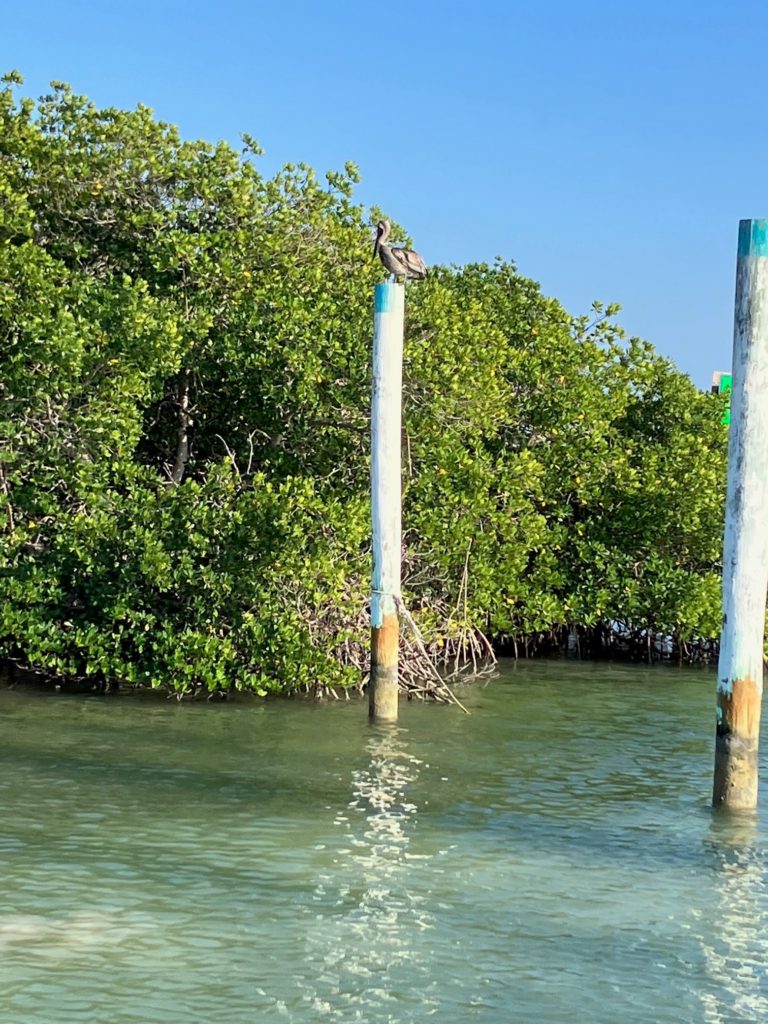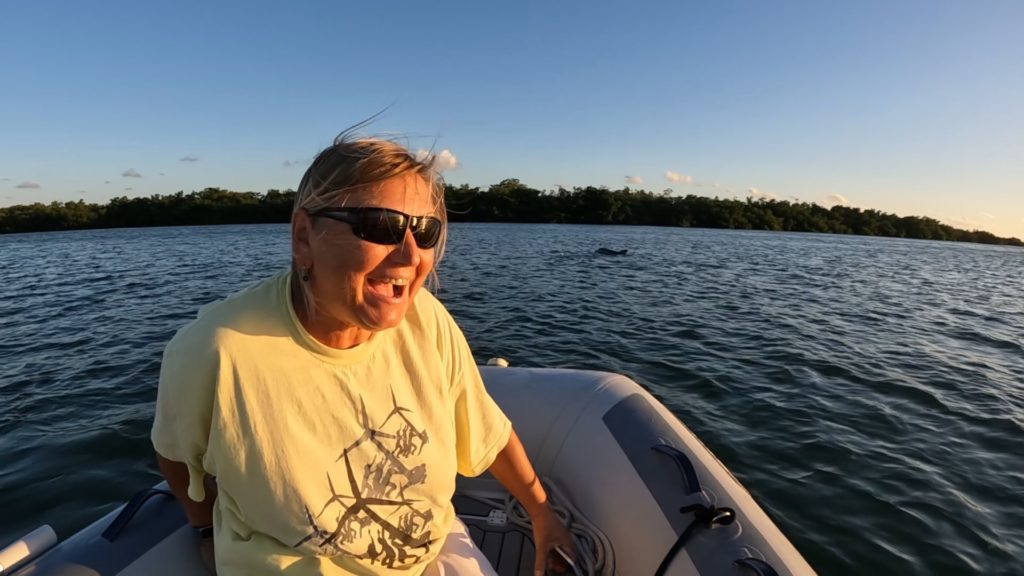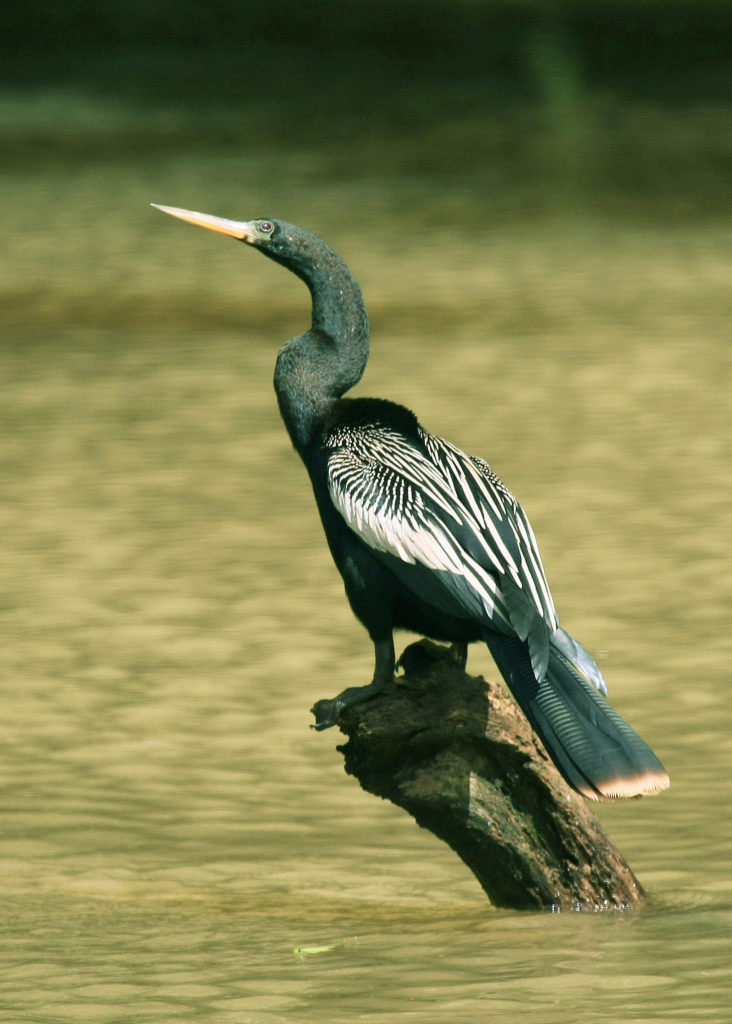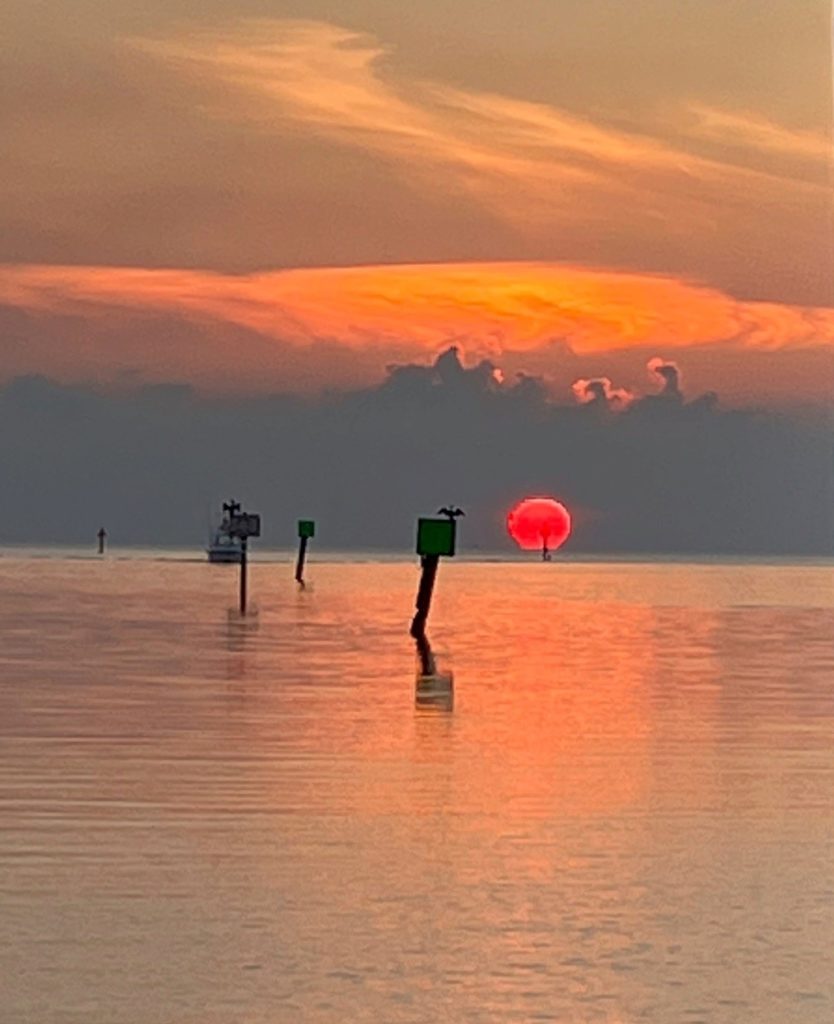“In every walk with Nature one receives far more than he seeks.”
― John Muir, Naturalist
“Sometimes I need only to stand wherever I am to be blessed.”
― Mary Oliver, Poet
In The Other, a 1971 novel by author Thomas Tryon, a pair of twin boys learn a game from their grandmother, and even though the novel goes to a very dark place, I love that game. I’ve remembered it through all of these years and practice it often. It goes like this: you stare at some living thing for a long time and imagine that you can see what it sees and feel what it feels. If it’s a bird, you can experience flying and feel the wind in your feathers, feel the drafts lifting you up by the wings, imagine how it feels to swoop out over the water and soar on the breeze. In the novel, the boys practice on each other and it doesn’t end well. But try it sometime. Pick a seagull or a pelican and take it for a spin.

Birds
Being retired, I feel that it is finally okay to spend time bird watching. It’s probably not okay to spend time imagining that I’m a bird, but the mind wanders and that’s what happens. From the cockpit of my boat, I can see seagulls, ibises, pelicans, cormorants, egrets, ospreys, and anhingas – sometimes all at once sitting on a large piece of debris in the harbor. They all sit together as if they are one flock. Birds have rules, usually. One bird to a piling, and only one. But a line of different species crowds together on the rusting train car, squawking and fussing.

Pelicans: My favorites are the pelicans. They are huge, with brown bodies and white heads folded down into their necks. In the air, they soar without flapping, graceful as scarves on the wind. But when they spy a fish in the water to capture and store in their massive throats, they become clumsy bundles of feathers, feet and beaks, crashing headlong into the water with a messy splash. It takes them a second to straighten out their limbs, toss the fish into their expandable throats and sit quietly, composing themselves. I’m going to make a slow-motion video of the pelican plunge and set it to the sound of a World War II bomber plane. These antics make me laugh out loud sometimes.

Ibises: These social birds fly together to a designated tree on land right at sunset. We’ve seen it again and again; they gather in the branches and rest there overnight. The coordinated timing is remarkable. They all seem to know when it’s time to go. White ibises have bodies shaped like footballs and long, pink curved beaks, although the beaks are straight until juveniles reach adulthood. These birds are the playboys of the bird kingdom. Males have multiple girlfriends, and mate often with a variety of females. However, a male will build a nest for one particular female and defend it while they raise their chicks.
Anhingas and Cormorants: These birds look very similar in the water. They swim around in a “seated” position, low in the water with just their heads and necks sticking out. They are similar in size, and both birds tend to sit on a perch with their wings unfurled. They don’t have oil glands like other sea birds, so they dry their wings by hanging them out. The lack of oil is an advantage in making deep dives for fish. Anhingas have pointed beaks and seem to be wearing snazzy silver jackets, while cormorants have hooked beaks and wear basic black.
Egrets and Herons: My father was proud of being able to identify birds by their minor characteristics. My sisters and I would tease him by asking what color the bird’s eyelashes were, or how many toenails they had. I guess I have come full circle: I know the difference between great egrets and great (white) herons is in their leg color. The white phase of the great blue heron is found only in Florida and has light colored legs. The great white egret has black legs. We have both here in Marathon, and we have some cranes that also look similar. They are tall, graceful, majestic. They can stand perfectly still on one leg in the shadow of the mangroves as we drift by in the dinghy.
I’m not very good at identifying the birds; I have a brother-in-law who can tell you what bird it is if you just send him a picture. But these are my few favorites, and I do love to waste my time watching them.
Marine mammals
Manatees: There are manatees at the marina for the winter. We are warned not to feed them or provide fresh water (you should see them lap up the freshwater leaks, as if the water they live in is too salty for their taste). Manatees are huge blobs of elephant-gray blubber, sometimes eight or nine feet long. They are shaped like giant loaves of Phil’s French bread, adding a flat tail, fins for front legs and a pig-like snout. When you see one in the water, it looks like an oval hump of seaweed until it raises its nose to breathe. In spite of this ugly description, manatees are actually cute. They have adorable faces.
These water-logged blimps are also mysterious and shy. We know they are here, but no one knows how many there are, and they’re nearly invisible when they hang out at the bottom of the harbor. Is that a rock, a seaweed pile, or a manatee? One day, a large adult floated for hours near the back of our boat, and we were convinced it was dying. It moved very little except to breathe. Our next-door neighbor, an ER physician, told us it was normal manatee behavior, related to mating. I guess they play easy to get, just waiting for a suitor to wander by.
Dolphins: When the dolphins come, they stay for a while. They never come alone, but in groups of two, three, sometimes five. They slide through the water in graceful arcs, silent and dignified. We have seen one or two fly completely out of the water in a frenzy, but that is rare. Mostly, they travel from south to north in our harbor, showing their dorsal fins every 30 feet or so. Twenty minutes later, they are gone, and I feel fortunate to have seen them.

I don’t know why people love the dolphins so much. People gather on the railing of the dockside restaurants to point them out, and the kayakers rush over to get a closer look. As far as I’m concerned, they are royalty – the lions of the ocean – honoring us with their presence. I know when I’ve been blessed.
How to Be Happy
For twenty years or more I’ve been trying to write an article titled, “How to Be Happy.” I may finish it one day, and I think I’ll put something in there about hanging around in nature. My happiest times in childhood were spent wandering through the woods in Connecticut and in California. Getting up early to catch rabbits in the backyard or deer next to our campsite brought enormous surges of joy. Sadness has no place in the woods. The birds won’t let it rest there.
So it’s not surprising that I spend time looking for wildlife in the Keys. It’s a different kind of wilderness here than I am used to, but the expanse of water just past the cockpit, the shadowy green of mangroves on either side of the harbor, the amazing oranges and fuschias of the always spectacular sunsets; they call to me. There is a lot to learn under the water and in the salty creeks where turtles and iguanas hang off the low branches. There are tiny deer in the islands to the west that I have never seen. I have a lot to do.
It’s just past five now, time for the ibises to be gathering and flying off toward land. There’s a small manatee next door. We just saw him poke his snout up to drink fresh-water drips from the boat in the next slip. Maybe later there will be dolphins.
“This grand show is eternal. It is always sunrise somewhere; the dew is never all dried at once; a shower is forever falling; vapor is ever rising. Eternal sunrise, eternal sunset, eternal dawn and gloaming, on sea and continents and islands, each in its turn, as the round earth rolls.”
― John Muir, “John of the Mountains,” American Naturalist and Environmental Philosopher


Lovely writing, Kay! Engaging and evocative.
Loved this and learned a lot! Since I don’t see well from a distance, identifying birds has always been a struggle and I’ve lumped the white heron and egret together! Your writing is a pleasure to read, Kay!